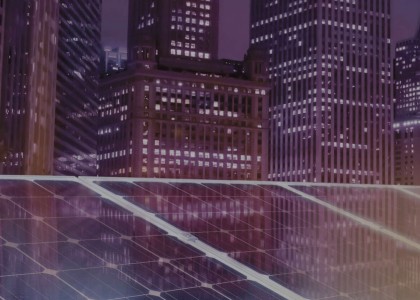Jump to download the white paper
Key Findings
|
Many utilities have programs that support the adoption of energy codes and appliance standards, or improve compliance with energy codes, or both. Codes programs often focus specifically on either residential or commercial building energy codes, and many utilities run both residential and commercial code support programs. Such programs yield considerable energy savings, for which utilities are able to claim credit under energy efficiency resource standards (EERS) policies in about one-third of U.S. states. Currently, early efforts are underway to extend these programs to more recent whole building energy performance improvement policies, such as building performance standards (BPS) or stretch codes.
This white paper provides an overview of states with utility energy codes programs and models for crediting utilities for the associated energy savings. Although many utility programs and attribution approaches include both building energy codes and appliance standards adoption support efforts, this paper focuses on programs supporting building energy codes. Additionally, this paper highlights opportunities for expanding utility energy codes programs to support emerging BPS policies and steps that may be required to do so effectively.
The list of states crediting utilities for energy codes programs continues to expand
The majority of states that credit utilities for energy savings from code implementation support efforts use a formal attribution approach. California was the first state to develop a formal attribution approach in 2005, which became a model for other states that have since developed programs of their own. The typical formal attribution approach involves calculating net program savings by determining potential energy savings, gross energy savings, and net savings. If multiple utilities are involved in the codes program efforts, utility-specific savings are calculated as a proportion of the net program savings, based on each utility’s share of program costs.
Figure ES1. States with energy code savings attribution approaches in place or in development
As shown in Figure ES1, 14 states and the District of Columbia (DC) currently credit utilities for energy savings from their code support programs: Arizona, California, Colorado, Hawaii, Idaho, Massachusetts, Minnesota, Montana, Nevada, New Jersey, New York, Oregon, Rhode Island, and Washington. While most of these states use a largely standardized formal attribution approach, a few differ. Arizona uses a deemed attribution approach, in which investor-owned utilities (IOUs) claim up to one-third of the energy savings that result from energy codes (Arizona Administrative Code 2022). In New Jersey, utilities or state agencies do not administer codes and standards programs, but the state permits the savings from building energy codes and appliance standards adoption to count toward overall energy reduction goals, meaning less energy savings are needed from other state- and utility-administered programs to meet energy savings targets. The New York State Energy Research and Development Authority (NYSERDA) attributes and claims energy savings from its codes and standards initiative. Utilities in Idaho, Montana, Oregon, and Washington fund codes and standards programs run by the Northwest Energy Efficiency Alliance (NEEA); NEEA reports energy savings from these programs, which are claimed by funders in the four member states.
In addition to the existing programs, five states are currently considering or developing models to attribute energy savings to utility codes and standards programs: Connecticut, Illinois, Michigan, New Hampshire, and Vermont. There are further opportunities to expand attribution approaches to states where utilities are not able to claim energy savings from existing codes and standards programs under EERS policies, such as Missouri and Iowa.
Building performance standards provide a new opportunity
While our research shows utility energy codes programs have had a significant impact, emerging BPS policies focused on existing buildings have the potential for much deeper energy and emissions reductions. Today’s buildings constitute a greater percentage of the overall building stock than new construction and will be the dominant users of energy for decades to come. Current energy codes programs and attribution frameworks could be extended to BPS support programs—and there are early efforts to do so in California, Illinois, and New York—but new program models will be required to support BPS compliance support efforts. In particular, BPS-specific approaches will be required to calculate net savings (the total energy or emissions reductions that can be attributed to the BPS rather than other policy and market forces) and net program savings (the portion of the net savings that can be attributed to utility BPS support programs).
Where multiple utilities contribute to or administer programs in the same BPS coverage area (e.g., where there is a state-level BPS), a direct relationship between utility contribution to program costs and utility-specific energy savings cannot be assumed, so new methods to evaluate the effectiveness of individual utility BPS programs may be required. Attribution of savings from BPS programs will also need to ensure that savings are not “double counted” with other utility incentive programs; an effective, holistic program design could even realize more benefits than a BPS or equipment/appliance incentives on their own.
There is currently no program or attribution model for utilities in BPS coverage areas. Given the success of the formal attribution model for energy codes programs, such a model—or individual state approaches—for BPS programs could significantly benefit jurisdictions’ existing building energy usage goals, building owners facing penalties for non-compliance, and utility customers who could benefit from smaller energy bills.
Download the white paper
| Suggested Citation |
| Garfunkel, Emily, and Michael Waite. 2024. Utility Energy Codes Programs and Their Potential Extension to Building Performance Standards. Washington, DC: ACEEE. www.aceee.org/white-paper/2024/07/utility-energy-codes-programs-and-their-potential-extension-building. |




